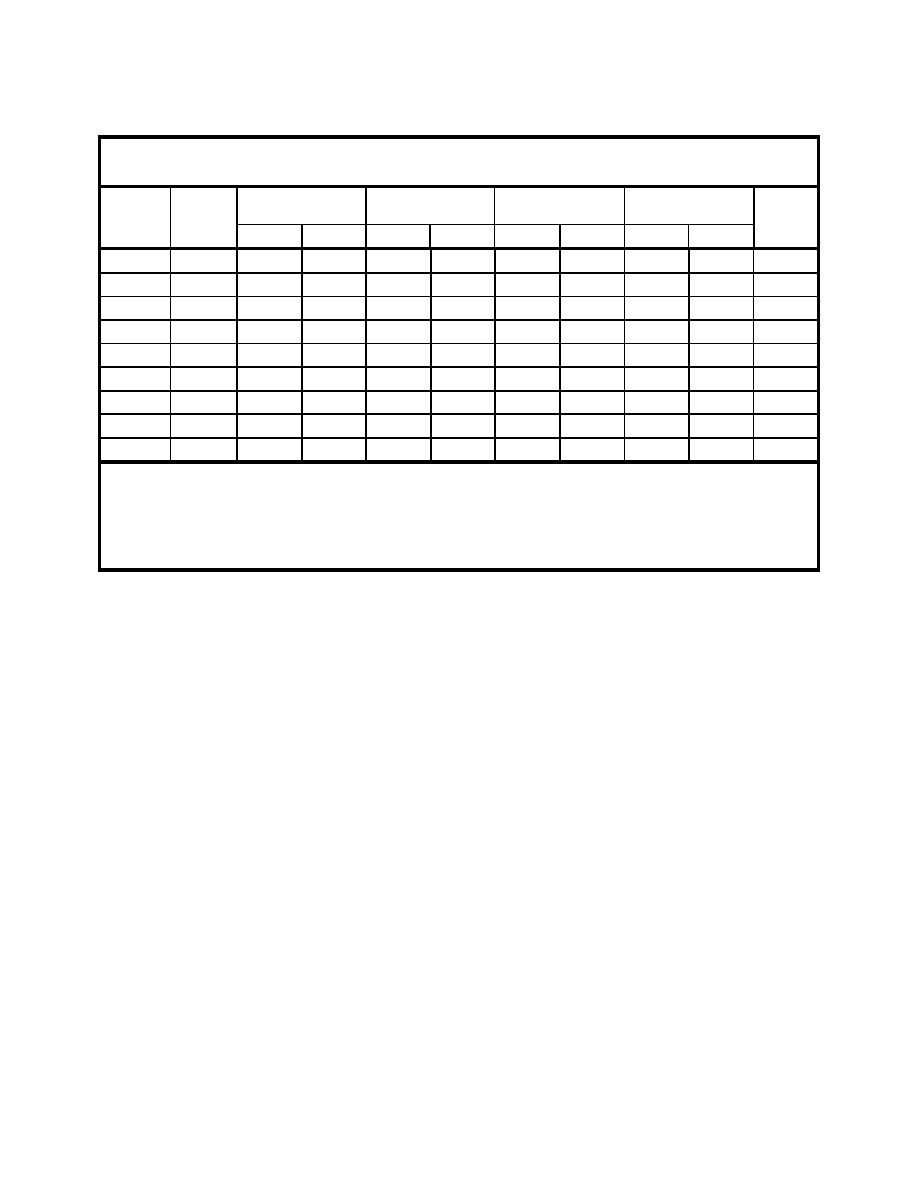
Table 13
High-explosive Load Carried by Munitions Items Commonly Fired at Fort Lewis1
Pellet Auxiliary
Supplemental
Main
Pellet Booster
Main Charge, g
Booster
Charge
Charge
2
Round
DODIC
Total, g
3
Wt (g)
HE
Wt (g)
HE
Wt (g)
RDX
TNT
HE
4
M67
G881
110.6
71.9
-
-
-
-
-
-
184.3
5
81-mm
C256
571.5
371.5
-
-
Tetryl
22.1
Tetryl
63.0
943
105-mm
C445
-
2086
TNT
136
-
-
-
-
2086
5
105-mm
C445
1252
814
TNT
132
-
-
-
-
2086
5
6
120-mm
C623
1790
1170
?
?
?
?
?
?
2990
120-mm
C788
-
2100
-
-
-
-
?
?
2100
107-mm
C697
1252
814
TNT
132
-
-
-
-
2086
5
155-mm
D544
4191
2725
TNT
136
-
-
-
-
6916
155-mm
D544
-
6622
TNT
136
-
-
-
-
6622
1
Source of data is the Munitions Items Disposition Action System (MIDAS) and personal communication from Mr. Mark Serben,
Office of the Product Manager for Mortar Systems, TACOM, Picatinny Arsenal, NJ, March 19, 2000.
2
Department of Defense Identification Code.
3
High explosive.
4
Not present.
5
Main charge is Composition B, which is typically composed of 60 percent RDX and 39 percent TNT.
6
Unable to determine presence or quantity.
For the total number of 105-mm rounds fired in 2000, potential loading from
high-order detonations can also be estimated by taking into account dud rates
(Table 12). About 7,126 rounds are estimated to have undergone high-order
detonations. An experimentally derived estimate of the amount of explosives
residue that is produced from the high-order detonation of a 105-mm round is not
yet available; however, an estimate for 60-mm mortars that also contain Compo-
sition B is 258 g of RDX, or about 20.6 percent of the RDX present in the
105-mm round. Experiments conducted by firing 60-mm rounds onto a snow-
covered range indicate that about 0.00007 percent of the RDX originally present
in the round remained undetonated and was deposited on the range (Jenkins et al.
2000). If this same percentage can be applied to high-order detonations of
105-mm rounds, then each detonation would deposit about 0.88 mg of RDX.
Multiplying this by the 7,126 high-order detonations results in an estimate of
about 6.2 g of RDX deposited from high-order detonations of 105-mm rounds at
Fort Lewis in 2000.
These estimates are preliminary. Source terms for rounds other than 60-mm
mortars are currently under development. However, even a small number of low-
order detonations appear to contribute a very large percentage of the total
explosives residues deposited from live firing. If the 0.00007 percent is correct,
then one low-order detonation in which half of the explosive remains can
contribute as much residue as about 700,000 high-order detonations. Based on
these estimates, efforts should be made to locate and remove the debris from
low-order detonations as soon as possible. This action alone may substantially
47
Chapter 2 Characterization of Explosives Contamination at Military Firing Ranges



 Previous Page
Previous Page
